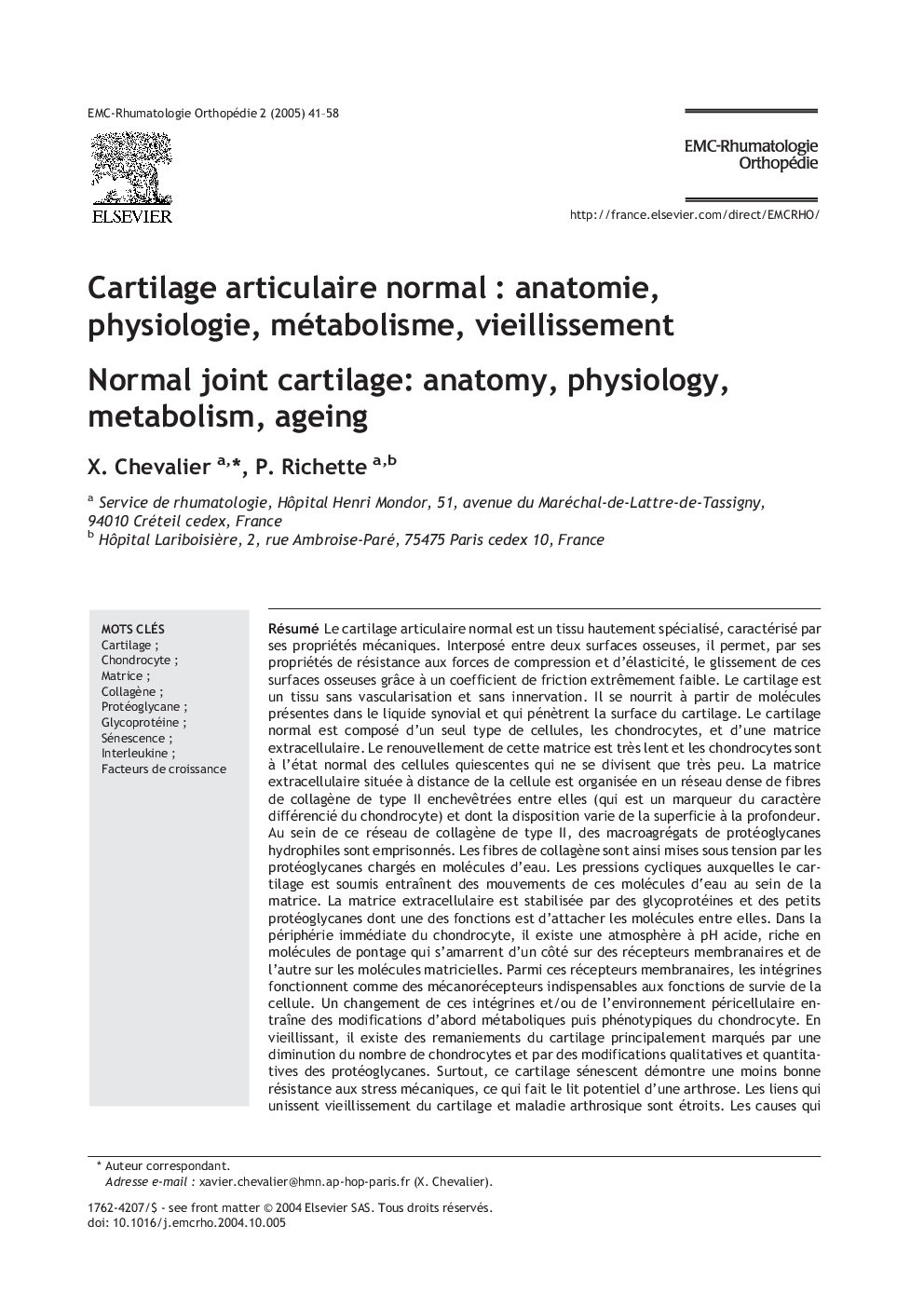| Article ID | Journal | Published Year | Pages | File Type |
|---|---|---|---|---|
| 9351958 | EMC - Rhumatologie-Orthopédie | 2005 | 18 Pages |
Abstract
The normal joint cartilage is a highly specialized tissue, characterized by its mechanical properties. It is located between two bone surfaces, and due to its capacity of resistance to compression and elasticity forces and its very low friction coefficient, it helps sliding movements of these bone surfaces. The cartilage is a tissue free of any vascularization and innervation, which lives on some molecules from the synovial fluid that penetrate the cartilage surface. The normal cartilage is constituted by a single type of cells, the chondrocytes, and an extracellular matrix. The renewal of this matrix is a very slow process, and normal chondrocytes are quiescent cells that barely divide. The extracellular matrix is located far from the cell and consists of a condensed network of type II collagen tangled fibres (marker of the differentiated character of the chondrocyte) of which the disposition vary from surface to depth. Macroaggregates of hydrophilic proteoglycans are imprisoned in this network, so the collagen fibres are put on the water-loaded proteoglycans pressure. The cyclic pressures imposed to the cartilage induce movements of these molecules of water inside the matrix. The extracellular matrix is stabilized both by the glycoproteins and by small proteoglycans of whom one of the functions is to bind the molecules to each other. Close around the chondrocyte, an acid pH atmosphere contains high amounts of bridging molecules, attached on one side to membrane receptors and on the other side to matrix molecules. Among these membrane receptors, the integrins function as mechanoreceptors necessary for cell survival. Any change in such integrins and/ or in the pericellular environment results in metabolic, and then phenotypic modifications of the chondrocyte. With ageing, modifications of the cartilage may occur, mainly with a reduced amount of chondrocytes and with qualitative and quantitative modifications of proteoglycans. Above all, this senescent cartilage reveals a diminished resistance to mechanical stress, which may result in potential osteo-arthritis. A strong relationship exists between the ageing cartilage and the osteo-arthritic disease. Multiple causes may induce diminished resistance to mechanical stress. Increased apoptosis may result from pericellular modifications and promote osteo-arthritis. The main function of the joint cartilage is to favour the joint movement whichever its motivation. The cartilage covers bone epiphyses and may be considered as a damper with a very low coefficient of friction and a very high coefficient of resistance to compression forces.
Keywords
Related Topics
Health Sciences
Medicine and Dentistry
Orthopedics, Sports Medicine and Rehabilitation
Authors
X. Chevalier, P. Richette,
